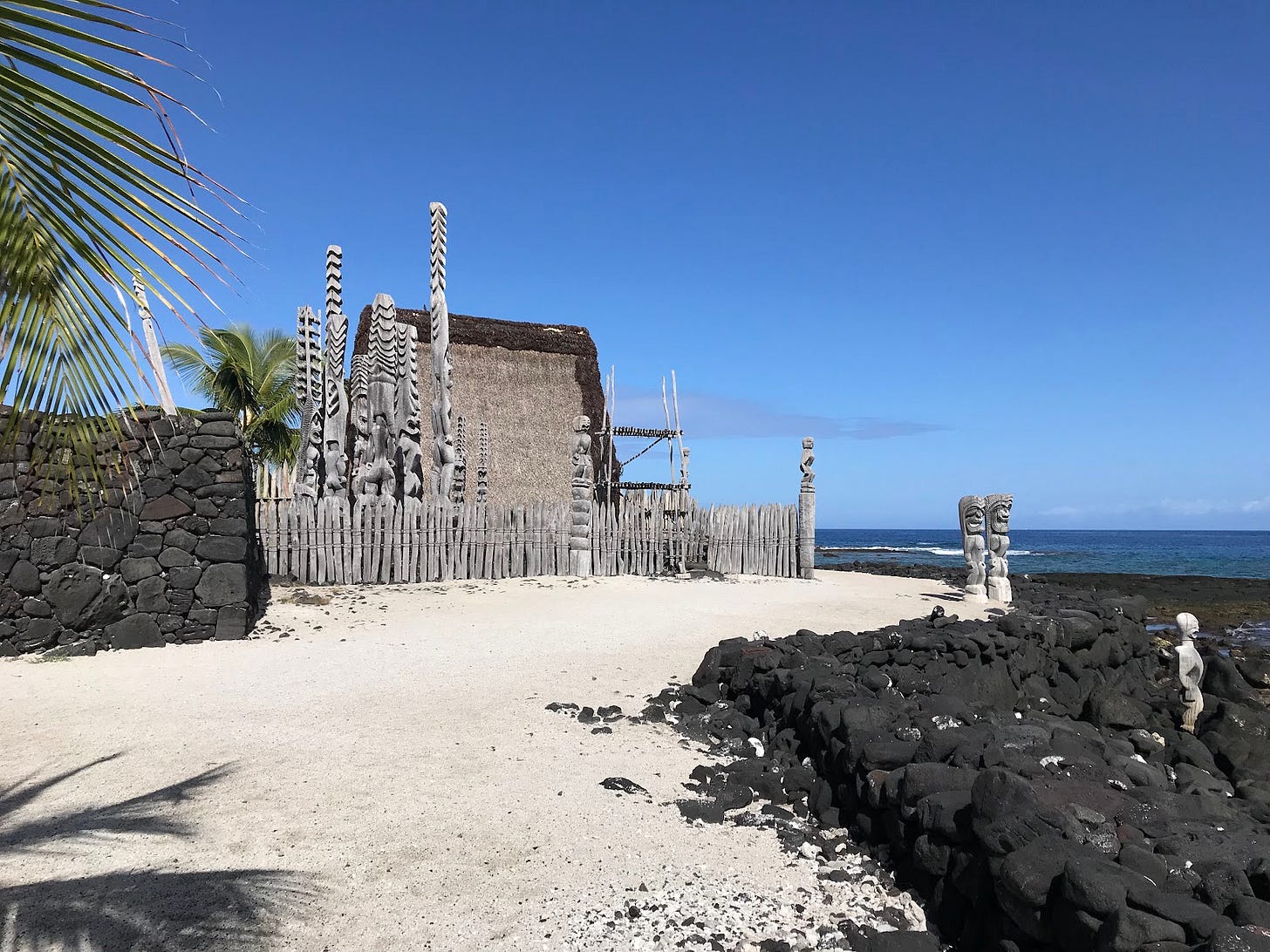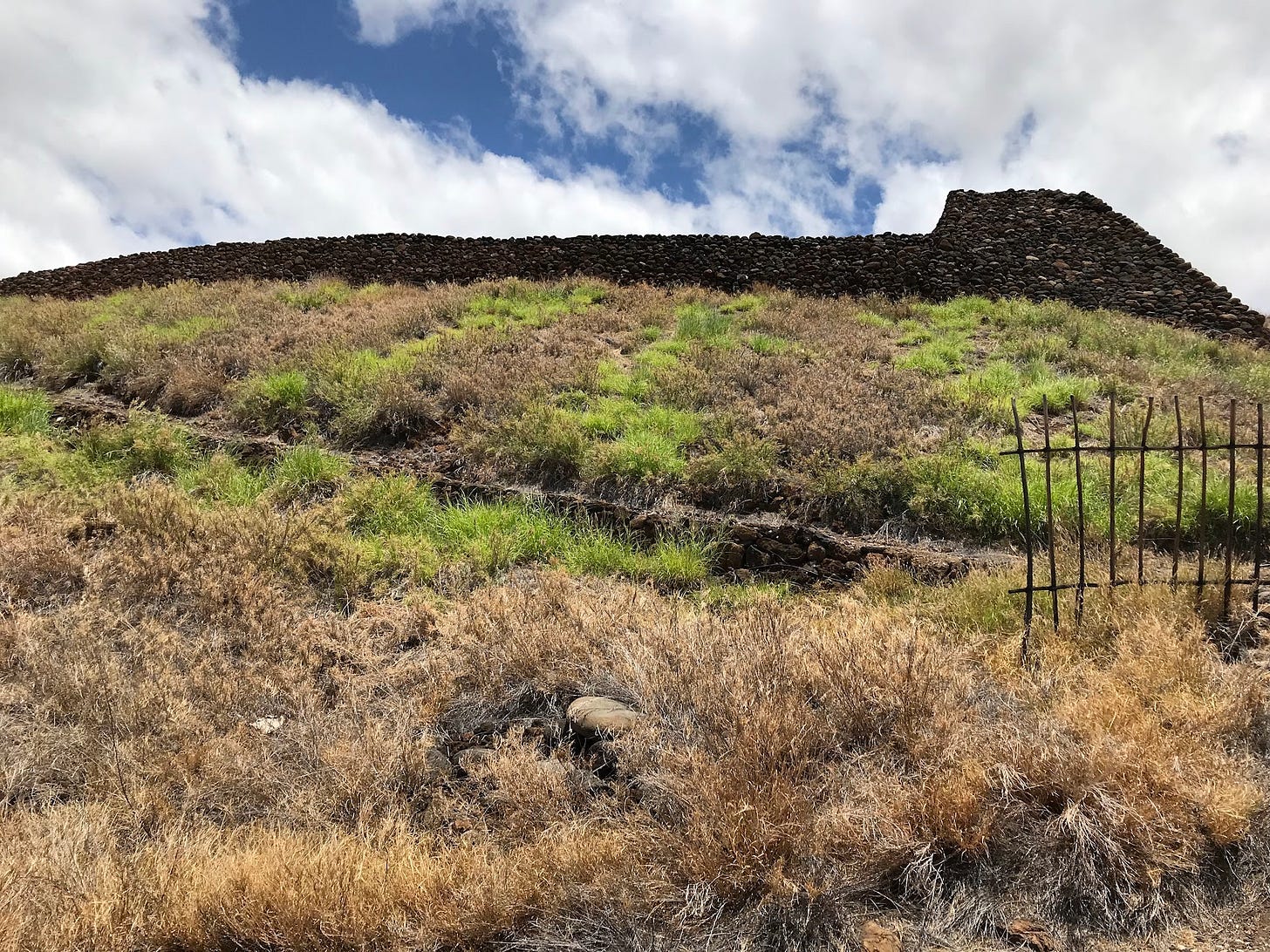Learning About Hawaii's History On The Big Island
by Visiting Several National Parks - Hawaii Big Island Trip Part IV - Letters from a Wanderer No 5
Hello and Welcome to the fifth edition of Letters from a Wanderer!
Continuing with my favorite moments from my recent trip to the Big Island of Hawaii, I’d like to talk about several National Parks on the Island set up to preserve ancient sites and showcase the history of Hawaii.
When I landed on the extensive lava field the Kona airport lays, I only knew about one of the Big Island’s National Parks, Volcanoes National Park.
So, on our first day on the island, as we drove along the road trying to find a beach, I didn’t expect to visit a National Historical Monument.
Kaloko-Honokohau National Historical Park
We stumbled upon the park by accident, so we didn’t have much time for a visit before it closed. However, we felt we needed to return to explore the site beyond the Visitor Center and the short paved path.
Kaloko-Honokau National Historical Park highlights the ingenuity of the ancient people of Hawaii who lived in this barren land of lava rock near the ocean. They developed a system of working and living in balance with their environment, something the present-day state of Hawaii still strives to keep.
They used ancient fishing skills, including the building fishponds, and the knowledge of the location of precious fresh water that flows into the pools throughout the park.
And after they harvested fish and other food from the sea and the ponds, then traded their surplus with extended family living in the uplands for other staples like taro, breadfruit, and mulberry.
After the first short visit, we noticed the mile-long trail leading through the park. When we returned, we took the trail that led past two fish ponds built over 600 years ago, walked out to the Aiopio fish trap pond, an artificial enclosure along the shoreline, and to Honokōhau Beach. This is where I saw the first green sea turtle on the island, swimming along the rocky volcanic shore.
Pu’uhonua o Honaunau National Historical Park
Pu’uhonua o Honaunau National Historical Park offered more stories of ancient Hawaiians.
Defined by the Great Wall, Pā Puʻuhonua, a massive L-shaped rock wall and the ocean, Puʻuhonua o Hōnaunau is an important Hawaiian ceremonial site. Beside the Great Wall, other ceremonial structures include the Ancient Heiau ʻĀleʻaleʻa Heiau and the Hale o Keawe, a traditional hale poki or consecrated house.
Hale o Keawe is the largest structure at the site, the site that in ancient times gave the place part of its spiritual power. In ancient times, people used it as a royal mausoleum, where they kept the remains of 23 deified high chiefs or aliʻi. The powerful mana (divine power) of these bones heightened the spiritual power of the place, protected by Lono, the God of life.
A Place of Protection
Because it had such immense spiritual power, Pu’uhonua o Honaunau was a sanctuary, protecting everyone within its boundaries, even those who broke kapu, the sacred law ancient Hawaiians lived by.
In ancient Hawaii, the sacred law, kapu regulated fishing, planting, and harvesting. It also enforced the social order. Breaking kapu disturbed the stability of society, and the punishment was often death.
However, any fugitive who had broken kapu could seek refuge and forgiveness within the walls of the Puʻuhonua. They would have to make it there, though, which meant running while being chased, but if they succeeded, they were forgiven and free to return to their lives.
During war, families of even enemies could seek refuge and safety within the Puʻuhonua and after the war ended, no matter who won, they would be free to return to their homes unharmed.
The concept of refuge in Hawaii has roots in the larger Polynesian culture. A ruling chief of a kingdom could declare certain lands or heiau (sacred structures) as puʻuhonua (place of refuge), and as long as they kept power, these designations would remain in force.
A Modern Place To Learn About Ancient History
Many pu’uhonua existed in ancient Hawaii, but Pu’uhonua o Hōnaunau is the one of the largest and best preserved. Locals respect the place and ask visitors to do the same.
Although the sacred temple, Hale o Keawe we see today, is not the original, and the bones of the ancient chiefs were removed, native Hawaiians still believe that the mana of the place remains, and sometimes leave offerings here.
When we visited, I noticed a group of local high school students on a field trip, learning about the history of the place. I noticed their teacher was telling them the stories in Hawaiian, not in English, and that gave me a warm feeling; I believe learning their own history in their native language has a greater impact. Watching them, I also noticed all the kids listening, asking questions, overall being interested.
Pu’ukohola Heiau National Historic Site
Another place to learn about Hawaiian history we discovered was a large temple built by King Kamehameha I on top of a hill overlooking the ocean at Pu’ukohola Heiau National Historic Site.
Here, I learned the story of the unification of a nation, the beginning of the Hawaiian Kingdom, in the late 1700s. It is the epic story of two great warrior chiefs - Kamehameha and his first cousin, Keoua Ku'ahu'ula.
High above the coast, on top of a hill, the temple Pu’ukohola Heiau is the last major heiau on the Hawaiian islands. Built for and dedicated by King Kamehameha I, it marked the start of the unification of all the Hawaiian islands under his rule. Since the unification was successful, the temple continued to be used to commemorate the event.
Native Hawaiians still celebrate the beginning of the nation here, every August.
Learning about the History of Places We Travel Enhances the Experience
No matter where we travel, we always find sites that help us learn about the history of the places we visit. It always adds an extra dimension to our visit and enhances the experience. It also helps understand locals and makes our interactions with them more meaningful.








